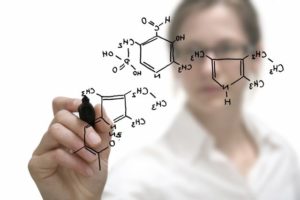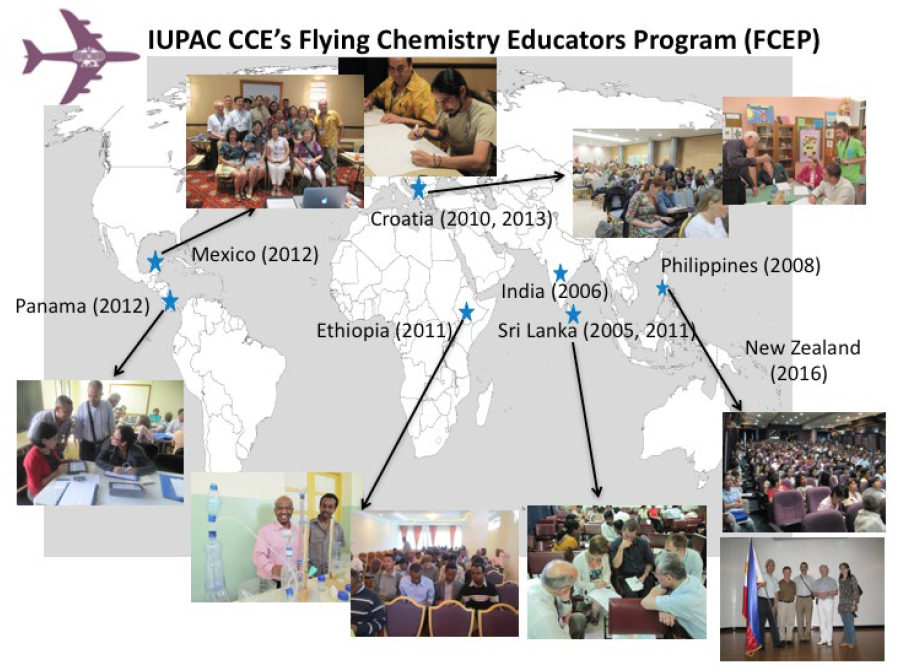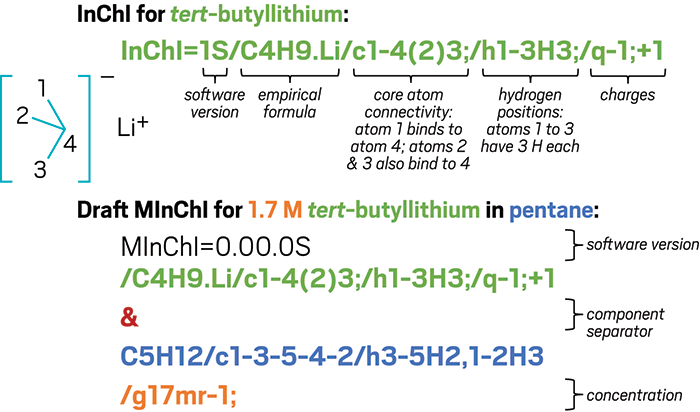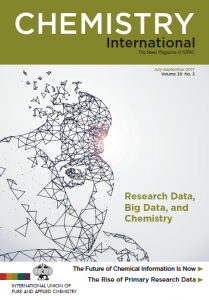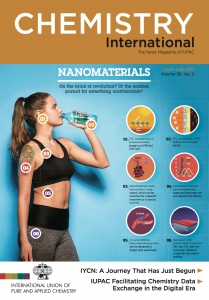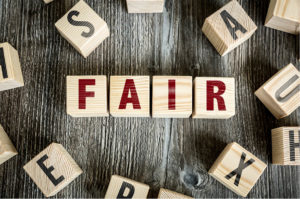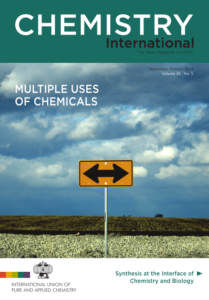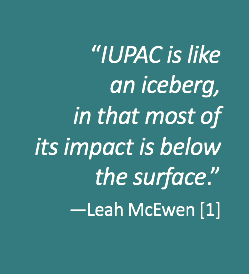 Founded in July 1919 to create a common language for chemistry to enable organization of chemical information at a time when chemists routinely named compounds according to their own personal preferences, the International Union of Pure and Applied Chemistry (IUPAC) has evolved with the times. The language that IUPAC initially created was based upon the mode of communication one hundred years ago – verbal and/or written – and for the past century that language and its related standards have successfully facilitated the rapid advancement of science. Even though there have been vast changes in chemistry and information technology over the past century, the communication challenges that chemists face remain surprisingly similar to those of a century ago. Throughout the years IUPAC standards have continued to play an essential role in ensuring that innovative approaches to information management are consistent and backwards-compatible to facilitate continued access to the rich historic record of the discipline.
Founded in July 1919 to create a common language for chemistry to enable organization of chemical information at a time when chemists routinely named compounds according to their own personal preferences, the International Union of Pure and Applied Chemistry (IUPAC) has evolved with the times. The language that IUPAC initially created was based upon the mode of communication one hundred years ago – verbal and/or written – and for the past century that language and its related standards have successfully facilitated the rapid advancement of science. Even though there have been vast changes in chemistry and information technology over the past century, the communication challenges that chemists face remain surprisingly similar to those of a century ago. Throughout the years IUPAC standards have continued to play an essential role in ensuring that innovative approaches to information management are consistent and backwards-compatible to facilitate continued access to the rich historic record of the discipline.
Fast forward to the twenty-first century and we see that chemists are now involved in global collaborative research, sharing digital information over international networks, and using computers as an integral part of research and communication. The written and spoken word are no longer sufficient in an era of digital information and interoperable data exchange world-wide. IUPAC has taking a leading role in the development of a new language for chemistry – one that is understandable by both humans AND their computers! From the advancement of the JCAMP-DX standard in NMR spectroscopy to the development of the InChI code for chemical structure representation in partnership with the InChI Trust, IUPAC is aggressively working to ensure that chemical information can be seamlessly distributed and unequivocally understood around the globe. And several new initiatives have emerged in recent years as IUPAC has reached out to like-minded organizations such as CODATA, the Research Data Alliance, the Royal Society of Chemistry, the Beilstein Institute, and, of course, the Division of Chemical Information of the American Chemical Society.
In celebration of IUPAC’s 100th Anniversary in 2019, a symposium will be held at the spring National meeting of the American Chemical Society on April 1, 2019. It will provide a glimpse of the past, but even more importantly, it will take a look at the promising future of the world-wide practice, sharing, and communication of digital chemical information. The following highlights IUPAC’s glorious past, its innovative present, and its vision for the next one hundred years.





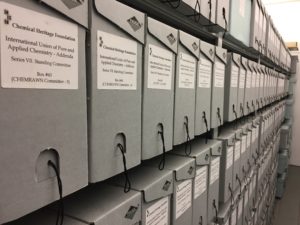
 Throughout its history IUPAC has been the global organization that provides objective scientific expertise and develops the essential tools for the application and communication of chemical knowledge for the benefit of humankind and the world. In addition to the invaluable work that IUPAC does to support and enable advances in “pure” chemistry research, IUPAC also reaches out through its interdisciplinary
Throughout its history IUPAC has been the global organization that provides objective scientific expertise and develops the essential tools for the application and communication of chemical knowledge for the benefit of humankind and the world. In addition to the invaluable work that IUPAC does to support and enable advances in “pure” chemistry research, IUPAC also reaches out through its interdisciplinary 